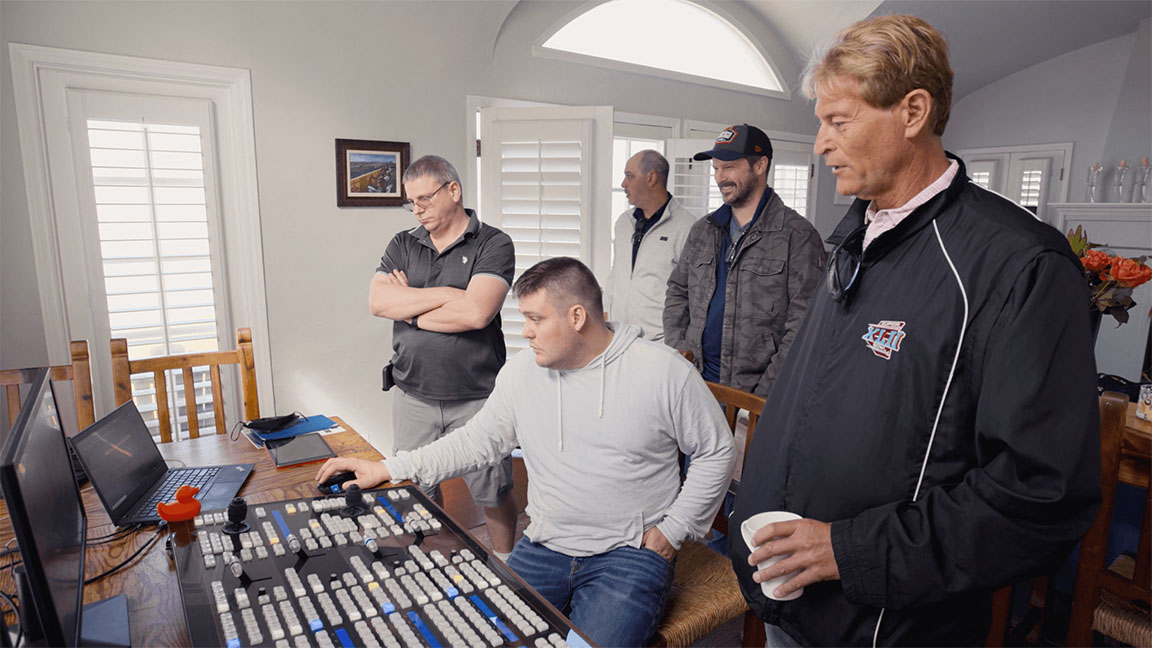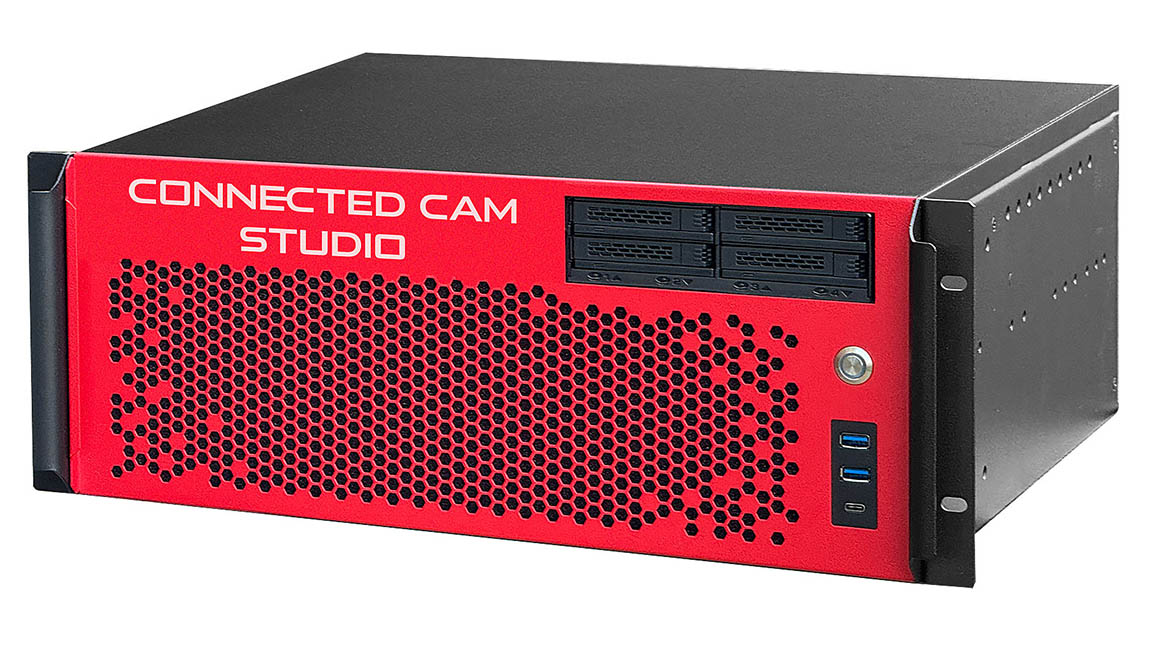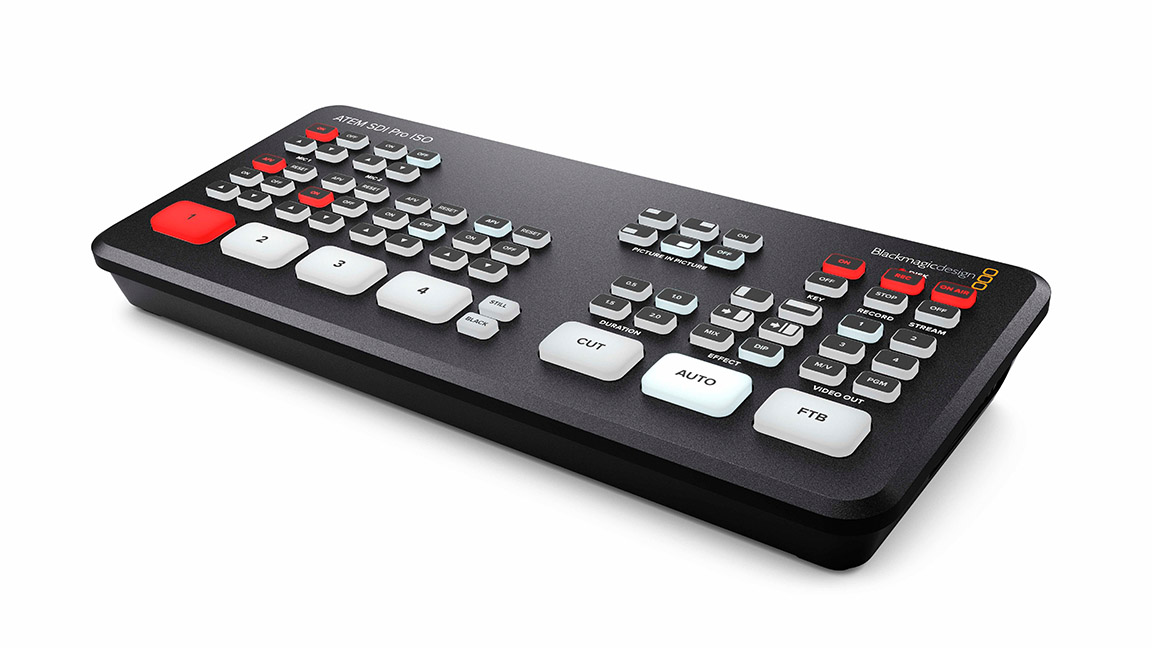Integrated Production Switchers: Doing More with Less
With built-in tools, these systems can reduce equipment space and simplify workflows.

With the integrated production switcher market experiencing significant growth, new technology offerings are being tailored to meet the needs of various markets, especially nontraditional broadcast environments including municipalities, schools, houses of worship, and corporations. Many of these installations are looking to simplify workflows and improve production management in control rooms as well as remote production vehicles.
"It's largely being used by people who may not have done video storytelling before and are just getting into it," said Christopher McLendon, senior product manager with Vizrt. "They find that an all-in-one integrated production system is a more accessible way to get into video production."
For integrated production switchers, the biggest selling point has always been the ability to control all system components. Key features include video switching, graphics creation, and clip playout. As interest in the technology has grown, these capabilities have expanded to include multiview monitoring, camera control, streaming, recording, and audio mixing. "Luckily, with today's technology, users don't need to sacrifice features even when using more compact gear," said Bob Caniglia, director of sales operations for Blackmagic Design, Americas.

The cost and convenience of an integrated production switcher can also be attractive to those operating within a limited budget but want professional-level production. "Instead of needing a variety of solutions from multiple vendors, users can select a single device that can easily handle their requirements for video production from a single control surface," explained Mike Garza, RUSHWORKS support engineer, system designer, and installer with ENCO Systems.
To that end, a well-designed control panel can ensure that anyone can operate the system, which is critical for those working with ever-changing volunteer staff. "Having everything integrated into one user interface simplifies the workflow significantly. PTZ control, audio mixing, and other built-in features allow for a streamlined operation, making it easier for operators to manage complex productions," said McLendon.
Hard or Soft?
There is also growing interest in software-based integrated production switchers, which are receiving top consideration from many venues. Vizrt TriCaster and vMix, for example, offer multiple NDI and SDI inputs as well as a wide range of production tools, including virtual sets, instant replay, and social media support. Small integrated switchers may be the preferred option for city councils or houses of worship, while more elaborate tools like vMix and TriCaster are more widely used in sports, schools, concert venues, and broadcast studios.

"We often see two types of production switcher customers: those interested in low cost and simplicity of operation, and others who plan to take full advantage of sophisticated production tools—animated graphics, video replay, scoreboards, etc.," said Edgar Shane, general manager of engineering and product development with JVC Professional Video.
A daily selection of the top stories for AV integrators, resellers and consultants. Sign up below.
As venues rely more on PTZ cameras, integrated production switchers with built-in PTZ control provides directors (especially those with a limited staff) the power to deliver multicamera productions with fewer camera operators. “The ability to recall camera preset positions and have full motion control of a PTZ camera offers significant flexibility without needing extra equipment or support,” noted Tony Mastantuono, product manager for Broadcast Pix.
Thinking about your needs and use cases come into play when deciding how many network inputs are needed, which could impact which switcher you choose. Networked resources could reduce the need for additional hardware and lower costs. "For instance, in a courtroom with six cameras, an integrated switcher might only need six inputs because it handles additional functions internally, such as video playback and graphics, which would otherwise require additional external inputs in a traditional system," McLendon offered.

If you need many inputs, a software-based solution could be your best choice, with many hardware-based switchers supporting up to 12 inputs. "The software-based solutions support many more since each input can be assigned to a live camera, pre-recorded content, graphics, virtual set, and other assets," said Shane. "For example, vMix software supports up to 1,000 inputs."
On The Network
Network inputs can expand content sources to include computer-generated content, IP cameras, and other NDI or IP-based sources. "These systems' primary advantage is their flexibility and scalability, allowing video sources to be easily distributed and accessed across different locations within the same network infrastructure, simplifying cable management and enhancing workflow integration," said Mastantuono.
[Cloud Power: The Evolution of Virtualized Production]
NDI offers significant flexibility for systems, helping to handle video sources easily through existing data networks. This simplifies system setup and management, making it easier for those with limited technical knowledge.
"The growth in the IPS market comes from NDI because it allows users to leverage their knowledge of data networking to create video networks—they can just set up a network, put in a couple of switches, and they're doing video," said McLendon. "This impacts all kinds of markets because all companies have IT people, but not all have video people. With NDI, IT people become your video people, and creating video becomes better."

With switcher technology rapidly evolving, AI will likely be leveraged to simplify workflows and enhance the quality of integrated elements like audio and graphics. "With new and improved technologies always on the horizon, users have a unique opportunity to make their content look better now than ever before, while at the same time simplifying their workflows and making them more efficient," said Caniglia.
[SCN Hybrid World Review: Logitech Going Beyond Good Enough]
There will also be an eventual shift toward 4K resolution; many are already beginning to adopt it, even though it isn't required in many industries, to ensure their systems are ready when the time comes. "As market demands evolve, they will drive changes in integrated production switchers," said Mastantuono.
Jennifer is a freelance writer and marketing consultant based in the New York City area. Within the AV industry, Jennifer loves to explore how technology can alter the world around us, creating immersive experiences unlike any other. She has years of experience working with AV integrators, manufacturers, and event production companies in developing engaging content to increase their overall awareness.

